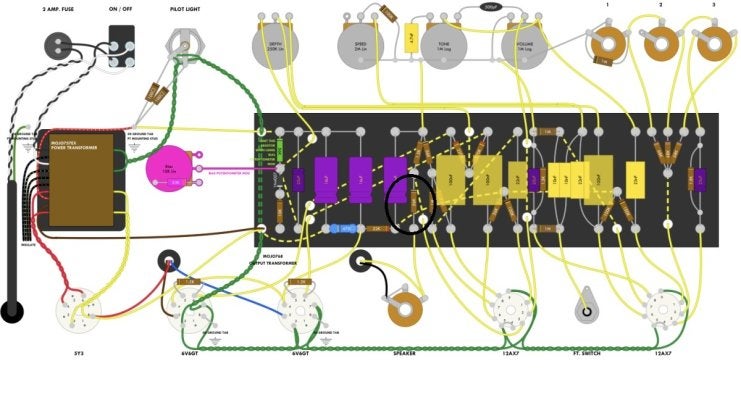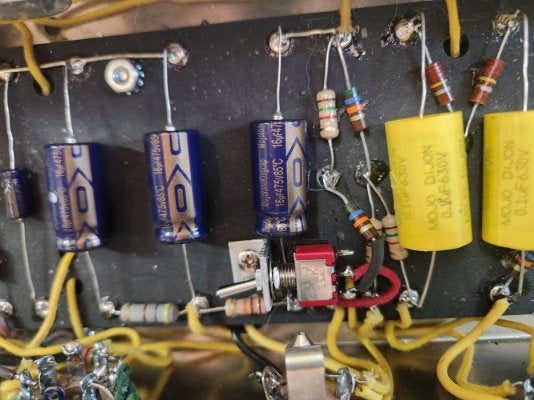MojoRick
TDPRI Member
Just completed construction of the 5f11 Mojotone and everything looks solid, Only problem is when the trem is switched on I get a chirping sound with each cycle of the tremolo. I have done the bias mod which doesn't help, in fact it seems to slightly increase the chirp with increasing the bias pot's resistance. Putting the 56K resistor back in (I have installed a switch to select) decreases the chirp a little further, but still present.
Mojotone tech has indicated that this may be a bias problem, and I have measured bias current, which is 24.56 ma for V3 and 27.36 for V4.
Mojo tech has stopped corresponding-
I have borrowed a complete set of tubes, will start by replacing the 6V6's.
If anyone has any assistance to offer I would greatly appreciate.
Mojotone tech has indicated that this may be a bias problem, and I have measured bias current, which is 24.56 ma for V3 and 27.36 for V4.
Mojo tech has stopped corresponding-
I have borrowed a complete set of tubes, will start by replacing the 6V6's.
If anyone has any assistance to offer I would greatly appreciate.



![5F113[1].jpg](/data/attachments/1366/1366481-209235343b1133a8c56b256348883966.jpg)
![5F112[1].jpg](/data/attachments/1366/1366479-7948928c894cbc3fb29c0ff98a0b194e.jpg)
![5F111[1].jpg](/data/attachments/1366/1366471-a367e1b1f9dc32ea488b6325b94327e4.jpg)

